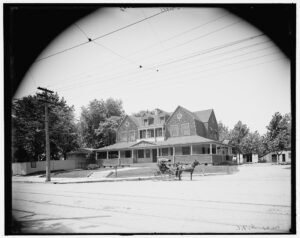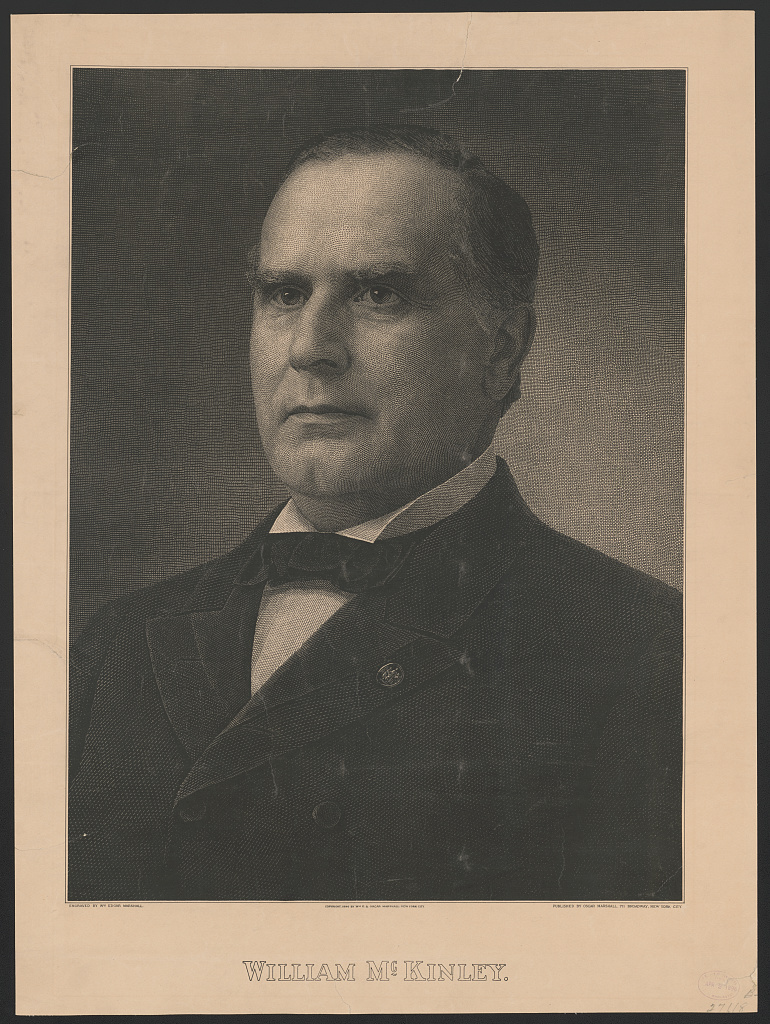I continue my research into forgotten Civil War hero Wells Waite Miller thanks to a book titled Margaretta Township and Castalia Village: Past and Present (Cold Creek Girl Scouts, 1976). You can find part one here where I fill in some gaps in my knowledge. Here’s the next set.
Wells Waite Miller: Short Teaching Career
After being seriously wounded at Gettysburg in 1863, Wells served in the position of captain in the Veteran Reserve Corp, effective April 1, 1864. He wanted to return to the regular Army but was denied the opportunity during the rest of the Civil War and after it ended. So, what could he do? He had a wife and family to support. Well, in 1867, Castalia High School opened at the corner of Rts. 101 and 269 in a new stone building. Long walnut tables were provided for students, but they needed to bring their own chairs. (BYOC?) So, Castalia was apparently aspiring for something greater than a typical one-room schoolhouse of the era as shown in the YouTube video above.
Wells is listed as the second teacher, which probably meant in 1868. He had attended two years of Oberlin Preparatory School, so he had to be more learned than many. Paid a salary of $200 for the four-month school year, this was considered a “high salary” that was equal to any found in the United States. This is comparable to $4,343.90 today. When considering that this took up a third of his year, this would be an annual salary of just over $13,000. That doesn’t sound high to me, but so it is.
Interestingly enough, Margaretta Township and Castalia Village: Past and Present notes that it wouldn’t be unusual to have a twenty-five-year-old student in class, so perhaps Wells was training former Civil War soldiers to help them find jobs that didn’t necessarily involve manual labor (given that many of them would have been wounded). By 1870, the census shows that Wells is working as a farmer. Perhaps he needed time for his wounds to heal before returning to agricultural.
Castalia Business District
Laid out in 1835, the Castalia Business District peaked in 1874 when it contained two stores, two groceries, one drug store, and two churches. Starting in 1825, the Pony Express had delivered mail every week. By 1874, mail was delivered daily.
Reasons for the post-1874 decline include a fire on June 2o, 1874 and two sporting clubs that gained rights over Cold Creek. In 1878, the Castalia Sporting Club and, in 1879, the Cold Creek Trout Club changed the makeup of the creek. Before, this was a center for mills and manufacturing. Now, the creek area became a place to fish and hunt. By this time, other sources of power besides the creek were used, but this meant that manufacturers no longer needed to locate by Cold Creek. Wells would have lived in Castalia as it grew in size and peaked as well as when it started a decline.
This didn’t mean that enterprise stopped. In 1875, a group of businessmen that included Wells’ father-in-law Calvin Caswell (the biggest wheat farmer in Erie County at the time) started Castalia Milling Company. This mill produced 125 barrels of flour daily and could store 20,000 barrels. In 1890, the cement industry took hold in Castalia, too.
Margaretta Township Grange Organization

In either January 1873 or 1874, Margaretta Township started a grange organization chapter with twenty-seven founding members, serving as the third one started in Erie County. Wells Waite Miller was chosen as the original master of the group, which was the group’s president. This meant that he would preside over meetings, oversee officers and committees, announce ballot results, make sure that organizational rules were followed, and so forth. Since he later served as the longtime secretary of Ohio’s Department of Agriculture, this must have been good training for that role.
As I’ve read newspaper articles in Sandusky newspapers of Wells’s era, I see him regularly mentioned along with his father in law and, sometimes, his wife Mary in connection with grange meetings. According to the National Grange, “Women were given voice and full vote within the Grange upon its founding, far before women were able to vote.” Good for them!
Presidents, Presidents. We’ve Got Presidents!

In Margaretta Township and Castalia Village: Past and Present, the book shares how McKinley and Wells were actually “good friends.” Wells was a staunch, progressive Republican, so this relationship makes sense. As a frequent guest of Wells, McKinley determined how many times he would need to pace across his friend’s front porch to get in a mile of exercise.
McKinley would also visit the home of Calvin Caswell, Wells’s father in law with whom Wells was close (and who was also a faithful Republican). There, on the front porch on Maple Avenue, McKinley gave a presidential campaign speech, a strategy used by Ohio presidential candidates of the era. Later, when another resident was going through closets in Calvin’s home, a ticket to McKinley’s inaugural ball was found in a tuxedo pocket.
Tantalizingly so, the book suggests that President Abraham Lincoln may have stopped at the Bardwell home in Castalia that was once a Caswell home.
Wells Waite Miller: Exploration of His Life and Times
I’d like to share my research about Wells Waite Miller from Castalia, Ohio with you. Although I’ve written the material in the order in which I’ve found research material, I now roughly have the posts in the order in which the events occurred.
Blog posts I’ve written on the subject so far include:
- Wells Waite Miller’s America
- Thomas Miller: Ancestors in England
- Great Puritan Migration
- Scandal in the Colonies
- Calm in the Eye of the Storm
- Aaron Miller: Born Under the Drumbeats of War
- Grandparents, Parents, and Siblings
- Enfield, New York
- Ohio Bound
- Oberlin Years: Fierce Debates About Abolitionism
- Enlisting in the Civil War
- A Look at Lodowick G. Miller
- Captured: Camp Parole
- Marching Towards Gettysburg
- Picketts Charge and 43 Bonus Years
- Glory Days to Invalid Corps
- Castalia Massacre
- Calvin Caswell
- Calvin Caswell, Continued
- Obed Caswell And Walter Caswell: Story of Brothers
- Miller Family Mystery Solved?
- Miller Family Mystery Solved, Part Two
- Amos and Corinne Miller
- Oscar Schultz Kriebel, Part One
- Oscar Schultz Kriebel, Part Two
- Oscar Schultz Kriebel, Part Three
- Oscar Schultz Kriebel, Part Four
- Erie County, Ohio for Congress
- Wells Waite Miller: Republic Candidate for Ohio Governor
- Ohio Antietam Battlefield Commission
- “Speaking the Names: A Tale of Two Brothers” at Ashland University’s Black Fork Review
I invite you to become part of this journey, sharing my posts with people who enjoy reading historical biographies.
If you read this material and have additional information that’s directly tied to Miller or sets context about his life—or you’ve spotted errors—please email me at kbsagert@aol.com.